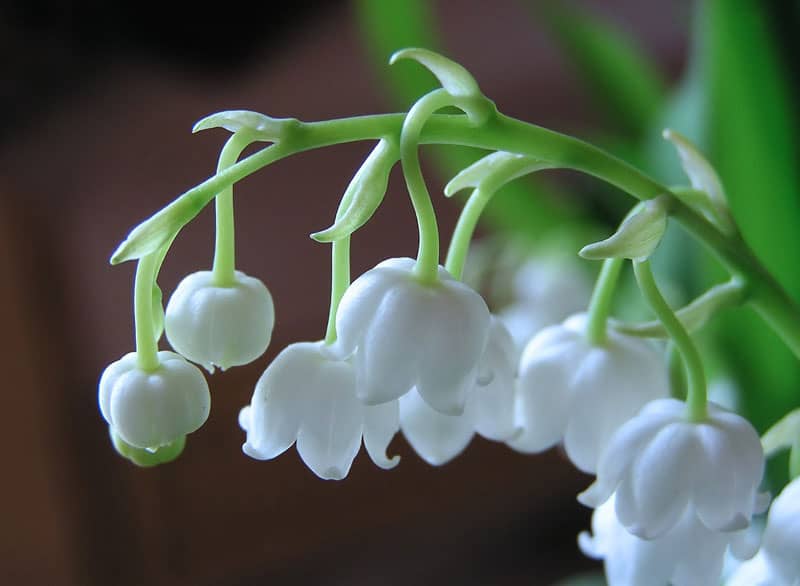Lily of the Valley Facts
- Perhaps most notably, the highly descriptive term of Lily of the Valley serves as one of the common names for a distinctly sweetly scented species. However, this marvelous beauty also goes by the alternate common names of the May bells, Mary’s tears, and Our Lady’s Tears. But, its difficult to pronounce scientific name remains Convallaria majalis. By either term, however, it remains a stunning work of Nature.
- In addition, the great majority of researchers also believe that this stunning beauty forms the only extant species within its genus. This truly impressive species has also become a popular garden plant in those regions of the world with the appropriate climate. The fabulous plant also most commonly flowers in late Spring. However, in mild winters in the greater part of its range, this takes place in early March.
- Quite fortunately, for the moment, at least, the IUCN lists the magnificent Lily of the Valley as a Species of Least Concern. This status appears on its Red List. Nonetheless, the remarkable plant must be considered to be at some risk. This holds true for several reasons. Firstly, though broad in nature, its habitat type remains restrictive. Secondly, though, its main threat doubtless consists of climate change.
Related Articles
Lily of The Valley Physical Description
The Lily of The Valley dazzles those who learn of it for more reasons than just its great visual appeal. That’s because it also constitutes a highly amazing species of herbaceous perennial plant by virtue of physical characteristics. That occurs partly due to the fact that it forms extensive colonies by extending underground stems.
Subsequently, new upright shoots generally form from the plant in the Summer. Following that, these grow in the spring into new leafy shoots. Yet these shoots still remain connected to the other shoots remaining underground. In this way, the Lily of The Valley often forms extensive colonies over significant areas.
But, its best known feature remains its sheer beauty. To begin with, its many delicate flowers display six white sepals. Though usually bright white, on rare occasions, these sometimes develop as pink in color. In addition, these form a bell-shape, averaging 0.4 in (10 mm) in diameter. Finally, the fruit appears as a small orange-red berry.
- Kingdom: Plantae
- Phylum: Angiosperms
- Class: Monocots
- Order: Asparagales
- Family: Asparagaceae
- Genus: Convallaria
- Species: C. majalis
Lily Of The Valley Distribution, Habitat, and Ecology
Most notably, the Lily of the Valley seems to have evolved as endemic to a very broad rang. This includes regions throughout much of the cool temperate Northern Hemisphere. This region mainly includes Asia and Europe. However, quite mysteriously, it also appears in certain portions of the southern Appalachian Mountains in the United States.
Also, an ongoing mystery surrounds the population of the stunning species found in the United States. Firstly, the population of the gorgeous flora in the Appalachian Mountains appears to be relatively sparse. Secondly, there also remains some debate among botanists as to whether this population evolved as endemic or occurs as the result of transplantation.
The Lily of The Valley also has very specific environmental requirements. For one, the plant typically prefers partial shade. The species also prefers warm Summers. Yet it thrives in soils that are silty or sandy, and acidic to moderate basic. It also mainly remains a sub-oceanic species which does best in regions at altitudes of up to 4921 ft (1,500 m).
Finally, like many beautiful species, that beauty conceals a dangerous, and sometimes deadly secret. This holds true due to the fact that, despite its delicate beauty, the marvelous plant also remains extremely toxic. All parts of the plant contain toxins, including the berries. Even small amounts become dangerous in ingested.
Species Sharing Its Range
Check out our other articles on 7 Highly Unusual Lakes, Japanese Angelshark, Havasu Falls, Six-Spotted Fishing Spider, African Penguin, Olive Ridley Sea Turtle, Purple Frog, Striped Possum

